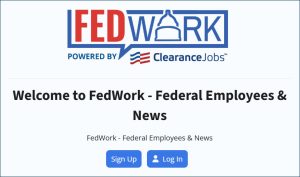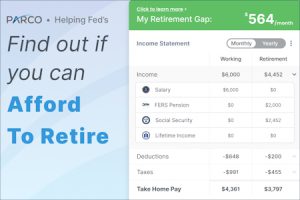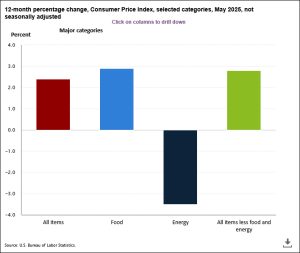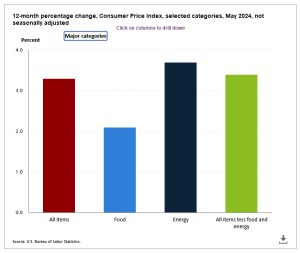Posted on Thursday, 17th July 2025 by Dennis Damp
 Print This Post
Print This Post
Please forward this to others needing retirement planning assistance.
Many federal employees are actively considering retirement today due to early, regular, and deferred options that are now or soon will be available as downsizing initiatives continue throughout the federal sector.
The reconciliation bill includes funding for the major reorganizations, reductions in Force (RIF), and relocations that will result from shedding 10 percent or more of the total federal civilian workforce. Now more than ever, those affected are seeking guidance on how to proceed and protect the benefits that have accrued during their careers.
Finding Your Way
Those planning their retirement and annuitants require accessible resources tailored to their specific situation.
It’s often frustrating and challenging to find competent help. There are many variables to what initially might seem like an obvious resolution; it makes sense to seek out clarifications. There are limits to what OPM can provide.
Retirement planning is, in itself, a complex process with numerous avenues to explore. Fortunately, help is available; what service you require depends on the complexity of the issues and the level of assistance you personally need. Please forward this to others needing retirement planning assistance.
LEVELS OF ASSISTANCE
- General Assistance
- Comprehensive Guidance
- One-on-One Counseling / Assistance
GENERAL ASSISTANCE
Retirement Planning Seminars
Contact your HR department to sign up for a retirement planning seminar. They cover FERS and CSRS employees (including Special provisions) and may be offered in Full or Half-day sessions. The information is generally divided into seven key areas:
- CSRS or FERS retirement annuity
- Thrift Savings Plan (TSP)
- Voluntary Contribution Plan (VCP) – CSRS and CSRS Offsets only
- Federal Employees Group Life Insurance (FEGLI)
- Social Security
- Federal Employees Health Benefits (FEHB)
- Federal Employees Dental and Vision Insurance Program (FEDVIP) and disability programs
OPM
The Office of Personnel Management (OPM) serves as the HR department for the federal government, administering the retirement benefits program. Active federal employees can research various aspects of retirement on OPM’s site. However, federal employees must contact their agency’s HR office to initiate the process. OPM has helpful retirement planning tools and guides that all should review and use when exploring their options:
- Retirement Quick Guide: A Reference for Voluntary Retirement. Download a copy and keep it with your retirement paperwork.
- Access OPM’s Retirement Application (ORA) portal to complete their retirement forms.
- Retirement Planning Tips
OPM services the federal retirement community. If you are an annuitant (retiree), call or use their online services portal to obtain current benefit information, related documents, and payment statements online if registered for their service.
It’s not easy getting through to them by phone, and when you do, expect long wait times. OPM is the only entity that can effect desired changes or update your records.
- Phone Number: 1-888-767-6738, TTY: 855-887-4957 weekdays only.
- Email: retire@opm.gov
- Website: https://www.opm.gov/retirement-services/
Federal employees with retirement questions should contact their HR department; OPM only services annuitants and survivors. Your HR department will explain your benefit options and arrange for you to attend a retirement seminar.
COMPREHENSIVE GUIDANCE
Federal Employee’s Retirement Planning Guide (www.federalretirement.net)
I launched this site in 2004 when I was planning my retirement. It is designed to help federal employees and retirees find the information they need to make informed decisions about their benefits and retirement.
A site visitor commented, “I spent 3 hours on the web looking for answers to questions concerning federal retirement. After a Google search yielded your address, it took only 20 minutes to find all the answers I needed. Thank you!!!”
How to Find Essential Retirement and Benefits Information on This Site
Abundant retirement planning guidance is compiled from a multitude of federal agencies: OPM, Social Security, Medicare, TSP, the Department of Labor, and others. Use the main menus and search box at the top of each page to find benefit clarifications, financial planning guidance, FERS / CSRS eligibility determination, annuity estimates, and suggestions that you won’t find elsewhere. The related blog and weekly email newsletter offer advice on current topics of interest.
- Website: https://www.federalretirement.net/
- Retirement Planning Blog https://www.fedretire.net
- Subscribe to our FREE Retirement Planning E-Mail Newsletter
Federal Employee’s Retirement Planning Software (https://fedretiresoftware.com/)
This easy-to-use and reasonably priced software is uniquely designed for federal employees (full-time, regular CSRS and FERS) to calculate their federal benefits, from start to finish, throughout retirement. You can also add income and/or expenses from other sources.
This calculator is used by tens of thousands of federal employees as well as Federal HR departments to make informed retirement planning decisions. Check out their Sample Report to get a better understanding of how comprehensive their calculator is for federal employees planning their exit.
ONE-ON-ONE COUNSELING / ASSISTANCE
Often, individuals require expert assistance to address complex issues and make informed decisions about what is best for their situation. A professional federal benefits consultant can address your concerns and answer any questions that you may have.
Here is a list of those you can contact to help you address your concerns when the research you’ve done hasn’t provided an answer.
Pensioned Americans Retirement Company (PARCO)
This easy-to-use, free platform enables all Federal Employees (FERS, CSRS, Special FERS, and FSPS) to view all their benefits and optimize their federal retirement. PARCO’s Platform is what I wish existed when I was planning for retirement, and it is used by thousands of FERS and CSRS employees across the country and around the world.
Their team comprises the best federal fiduciary retirement experts who will help you maximize your pension and the benefits that accompany retirement. Their platform guides you through the process step by step.
Federal employees complete their online profile, and PARCO evaluates where you are and what you may need to do to achieve your retirement goals. They put you in touch with specialists who can address your concerns and recommend a personalized path to keep you on track.
Retire Federal
This consulting firm is owned by Tammy Flanagan, a federal benefits expert who has been assisting feds since her days of employment with the Federal Bureau of Investigation. She and her staff of experienced counselors offer invaluable fee-for-service personal consulting for civilian federal employees and annuitants, covering pre-retirement preparation to post-retirement decisions and events.
Their staff will assist you with a thorough review of your pre-retirement tasks and help you determine whether to enroll in Medicare Part B and which FEHB plan will best coordinate with your situation. They can address your concerns, answer questions, recommend options, provide details as to why one path is preferred over another, and put your mind at ease.
Consultant – Divorce Related Issues for Federal Employees
Ann Ozuna is a retired Personnel Management Specialist. She founded Personnel Solutions Federal Benefits Counseling upon retirement from federal service in 1996. In addition to her 25-year federal personnel career, she holds an MBA from Gonzaga University and the Senior Professional in Human Resources (SPHR) and Chartered Federal Employee Benefits Consultant (ChFEBC) designations. She provides consulting services for federal employees facing divorce and attorneys working with federal clients.
- Divorce Considerations
- Don’t Get Burned by Your Old Divorce Decree
- Contact: (509) 993-2283, Email: RetireLady@asisna.com
If you need answers to retirement questions or don’t know what options are best for you and your family, use the resources listed above or other reputable services.
Helpful Retirement Planning Tools
Join other federal workers on the FedWork Network.
Sign up for this Free Service to get started.
- Financial Planning Guide for Federal Employees and Annuitants
- TSP Guide
- Budget Work Sheet
- Retirement Planning for Federal Employees & Annuitants
- The Ultimate Retirement Planning Guide – Start Now
- Deciding When To Retire – A 7-Step Guide
- 2025 Federal Employee’s Leave Chart
- Medicare Guide
- Social Security Guide

Over time, various dynamic economic factors relied upon as a basis for this article may change. The information contained herein should not be considered investment advice and may not be suitable for your situation. This service is not affiliated with OPM or any federal entity. You should consult a financial, medical, or human resource professional where appropriate. Neither the publisher nor the author shall be liable for any loss or other commercial damages, including but not limited to special, incidental, consequential, or other damages.
Tags: CSRS, Federal Retirement Assistance, Federal Retirement Guide, Federal Retirement Help, FERS, OPM Information, Retirment Counseling Services
Posted in ANNUITIES / ELIGIBILITY, BENEFITS / INSURANCE, ESTATE PLANNING, FINANCE / TIP, RETIREMENT CONCERNS, SOCIAL SECURITY / MEDICARE, SURVIVOR INFORMATION
Comments (0)|  Print This Post
Print This Post














